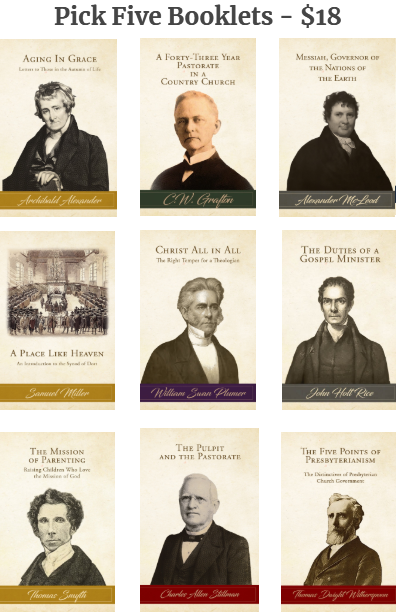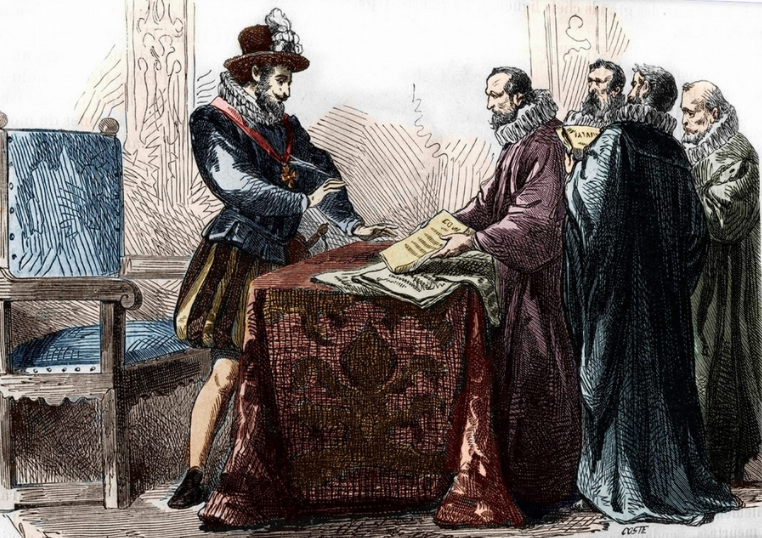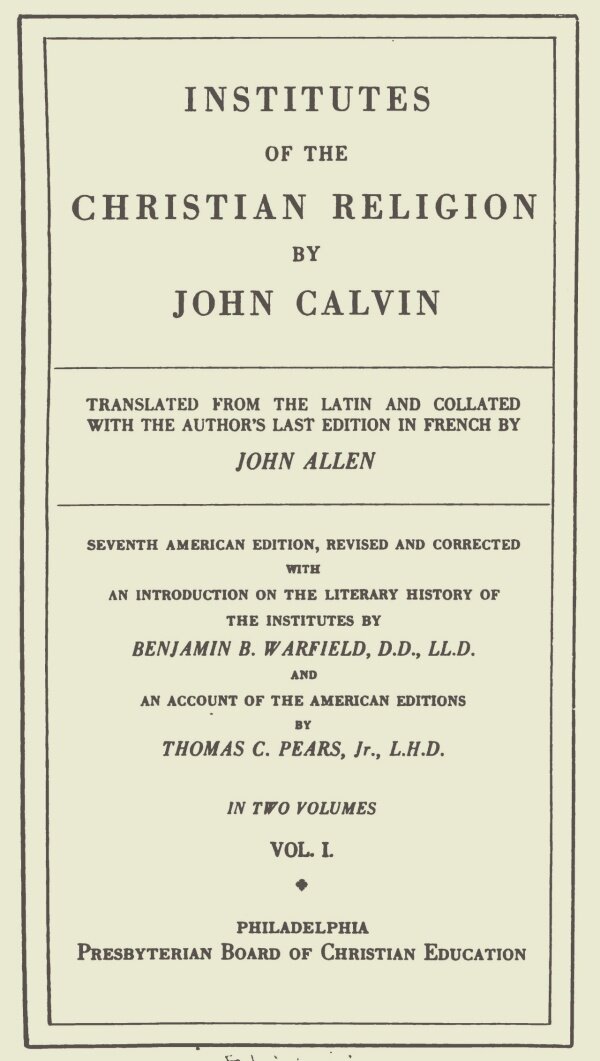The testimony of Archibald Alexander appears in J.W. Alexander’s biography, The Life of Archibald Alexander, D.D. (1854), in which Archibald writes of “the sublime”:
But in this same [Shenandoah] valley, and not very remote from the objects of which I have spoken, there is one which, I think, produces the feeling which is denominated the sublime, more definitely and sensibly than any that I have ever seen. I refer to the Natural Bridge, from which the county takes its name. It is not my object to describe this extraordinary lusus naturae, as it may be called. In fact, no representation which can be given by the pen or pencil can convey any adequate idea of the object, or one that will have the least tendency to produce the emotion excited by a view of the object itself. There are some things, then, which the traveller, however eloquent, cannot communicate to his readers. All I intend is, to mention the effect produced by a sight of the Natural Bridge on my own mind. When a boy of fourteen or fifteen, I first visited this curiosity. Having stood on the top, and looked down into the deep chasm above and below the bridge, without any new or very strong emotions, as the scene bore a resemblance to many which are common to that country, I descended by the usual circuitous path to the bottom, and came upon the stream or brook some distance below the bridge. The first view which I obtained of the beautiful and elevated blue limestone arch, springing up to the clouds, produced an emotion entirely new; the feeling was as though something within sprung up to a great height by a kind of sudden impulse. That was the animal sensation which accompanied the genuine emotion of the sublime. Many years afterwards, I again visited the bridge. I entertained the belief, that I had preserved in my mind, all along, the idea of the object; and that now I should see it without emotion. But the fact was not so. The view, at this time, produced a revival of the original emotion, with the conscious feeling that the idea of the object had faded away, and become both obscure and diminutive, but was now restored, in an instant, to its original vividness, and magnitude. The emotion produced by an object of true sublimity, as it is very vivid, so it is very short in its continuance. It seems, then, that novelty must be added to other qualities in the object, to produce this emotion distinctly. A person living near the bridge, who should see it every day, might be pleased with the object, but would experience, after a while, nothing of the vivid emotion of the sublime. Thus, I think, it must be accounted for, that the starry heavens, or the sun shining in his strength, are viewed with little emotion of this kind, although much the sublimest objects in our view; we have been accustomed to view them daily, from our infancy. But a bright-coloured rainbow, spanning a large arch in the heavens, strikes all classes of persons with a mingled emotion of the sublime and beautiful; to which a sufficient degree of novelty is added, to render the impression vivid, as often as it occurs. I have reflected on the reason why the Natural Bridge produces the emotion of the sublime, so well defined and so vivid; but I have arrived at nothing satisfactory. It must be resolved into an ultimate law of our nature, that a novel object of that elevation and form will produce such an effect. Any attempt at analyzing objects of beauty and sublimity only tends to produce confusion in our ideas. To artists, such analysis may be useful; not to increase the emotion, but to enable them to imitate more effectually the objects of nature by which it is produced. Although I have conversed with many thousands who had seen the Natural Bridge; and although the liveliness of the emotion is very different in different persons; yet I never saw one, of any class, who did not view the object with considerable emotion. And none have ever expressed disappointment from having had their expectations raised too high, by the description previously received. Indeed, no previous description communicates any just conception of the object as it appears; and the attempts to represent it by the pencil, as far as I have seen them, are pitiful. Painters would show their wisdom by omitting to represent some of the objects of nature, such as a volcano in actual ebullition, the sea in a storm, the conflagration of a great city, or the scene of a battle-field. The imitation must be so faint and feeble, that the attempt, however skilfully executed, is apt to produce disgust, instead of admiration.
In a letter from Charles Hodge to his wife Sarah dated May 28, 1828, written during his trip to Europe, which appears in A.A. Hodge’s biography The Life of Charles Hodge D.D. LL.D. Professor in the Theological Seminary Princeton N.J. (1880), Charles refers to the Natural Bridge (which he had visited during his 1816 tour of Virginia):
My Beloved Sarah: -- I have seen the Alps! If now I never see any thing great or beautiful in nature, I am content. I felt that as soon as I saw you, I could fall at your feet and beg you to forgive my beholding such a spectacle without you, my love. You were dearer to me in that moment than ever. I left Basel about one o'clock with a young English gentleman for Lucerne. We rode about fifteen miles and arrived at the foot of a mountain. As the road was steep and difficult, we commenced walking up the mountain in company with two Swiss gentlemen. We ascended leisurely for about two hours before we reached the top. I was walking slowly with my hands behind me, and my eyes on the ground, expecting nothing, when one of the Swiss gentlemen said with infinite indifference -- "Voila les Alpes." I raised my eyes -- and around me in a grand amphitheatre, high up against the heavens, were the Alps! It was some moments before the false and indefinite conceptions of my life were overcome by the glorious reality. The declining sun shed on the immense mass of mingled snow and forests the brightness of the evening clouds. This was the first moment of my life in which I felt overwhelmed. Every thing I had ever previously seen seemed absolutely nothing. The natural bridge in Virginia had surprised me -- the Rhine had delighted me -- but the first sudden view of the Alps was overwhelming. This was a moment that can never return; the Alps can never be seen again by surprise, and in ignorance of their real appearance.
In the 20th century, inspired by this American wonder, Robert Alberti Lapsley, Jr. wrote The Bridge of God: A Spiritual Interpretation of the Natural Bridge of Virginia (1951) [not yet available on Log College Press].
A visit to Natural Bridge may be just another American Natural Wonder seen and checked off the list, or it may be a real spiritual experience. All depends on the visitor himself, and the spirit in which he approaches the Bridge. For here is something man with all his vaunted skill could never have made. Here is something straight from the hand of the Creator.
…
That God is recognized as the workman is shown by the comments of visitors to the Bridge. An employee found a German refugee kneeling under the Bridge just at twilight in the attitude of prayer. As he approached she rose and said, “I have been thanking God that there are place like this left in the world.” Two women stood under the Bridge for a long time in silence. Finally one said, “It gives me a feeling of mightiness.” But the other replied, “It gives me a feeling of smallness.” A mother, showing the Bridge to her child, said, “See, dear, the Bridge was made by God. Man did not build it.” Said a couple from York, Pennsylvania, “Often when we visit places and see things of which we have been told, we are disappointed. But Natural Bridge surpassed all our expectations.”
That God is recognized as the workman is shown by the comments in the Visitors’ Book at the entrance. In the Gatehouse there is a large volume where visitors are invited to write their names as they leave, with any comments they wish. Most of the comments are trite and commonplace, such as “Beautiful,” “Wonderful,” “Stupendous,” “Awe-inspiring,” “Grand,” etc. But every once in a while some visitor will take the time to record in this book a profound religious experience. Here are a few examples:
A lady from Pittsburgh: “It brought me as near to Heaven as I will probably get.”
A man from Indiana: “It would be hard to find something more God-like.”
A lady from Portsmouth, Virginia: “We left in a mood of reverence.”
A mother and son from Texas: “It brought us a new realization of God’s creation, beautiful and breath-taking.”
A couple from Massachusetts: “We found it a beautiful way to worship.”
A young lady from Kentucky: “It has the atmosphere of a Cathedral, and it drew me closer to my Maker.”
A girl from Elkton, Virginia: “It lifted me into the Seventh Heaven.”
A couple from Oak Ridge, Tennessee: “It brought us in touch with the Infinite.”
A professor from Yale University: “It is religiously inspiring.”
That God is recognized as the workman is shown by the tributes of famous men and women who have visited the Bridge. Samuel Kercheval, in his History of the Valley of Virginia, speaks of it as “the most grand, sublime, and awful sight I ever looked upon.” Arno B. Cammerer, Director of United States Parks, who is familiar with all the natural beauties of America, in a personal letter to a friend says that the Bridge impressed him as “one of the most wonderful and lovely examples of Nature’s Architecture” he had ever seen. Mildred Seydell, internationally known author and writer, put her feeling in these words: “Man expresses the beauty of his thoughts by making songs and poems and pictures and sculpture, but God has expressed the beauty of His thoughts by creating Natural Bridge of Virginia.” It was Henry Clay, the great Kentucky statesman, who coined this expressive phrase, “The Bridge not made with hands,” while John Marshall described it as “God’s greatest miracle in stone.”
Over and over, we see among these extracts references to the sublime. Truly, that word perhaps best captures the elevated impression that this remarkable natural wonder of God’s handiwork in creation. The tributes to this special found in the writings of many, including these American Presbyterians, testify to beauty, power and wisdom of God.






























